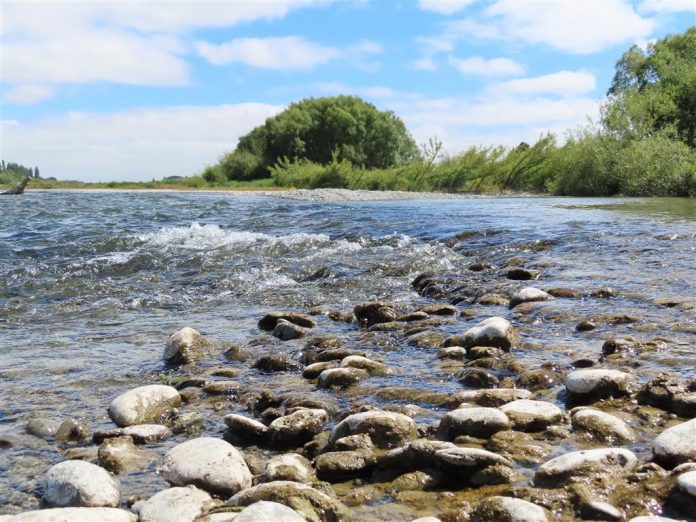Health officials have issued a algae bloom health warning for the Ashburton River/Hakatere SH1.
It comes after a health warning issued to water users of Lake Hood in early January. It also has algae bloom.
The recent warning on Ashburton River, follows the finding of moderate to high cover of potentially toxic algae (benthic cyanobacteria) in the Ashburton River/Hakatere near the state highway one bridge.
National Public Health Service medical officer of health Dr Cheryl Brunton said the algae look like dark brown to black mats and can produce toxins harmful to people and animals.
“Exposure may cause skin rashes, nausea, stomach cramps, tingling and numbness around the mouth and fingertips.”
“If you experience any of these symptoms, visit your doctor immediately, also let your doctor know if you’ve had contact with dark brown/black algal mats or water in this area”, Dr Brunton said.
People should avoid the area and animals, particularly dogs, should not be allowed near the water until the health warning has been lifted.
There are also other access points along the Ashburton River/Hakatere SH1 that may have benthic cyanobacteria present.
People are advised to treat every low-flowing river cautiously, check for the presence of benthic cyanobacteria and avoid contact.
Pets that show signs of illness after coming into contact with algal mats should be taken to a vet immediately.
People and animals should remain out of the waterways until the warnings have been lifted.
Environment Canterbury is monitoring the sites and the public will be advised of any changes in water quality.
At Lake Hood, a water quality taskforce is working on long-term solutions to improve the lake’s water quality including bringing in an aquatic harvester to remove weed, introducing aeration in the canals, and looking at inputs to remove nutrients from the lake.
The taskforce, made up of representatives from the Ashburton Aquatic Park Charitable Trust, the Huntingdon Park Property Owners Association, Lake Hood Extension Project and Ashburton District Council, has been working with Environment Canterbury, Te Whatu Ora and consulting experts since March last year.
About cyanobacteria:
- Appears as dark brown/black mats attached to rocks along the riverbed.
- A low cover of the algae can occur naturally but can increase rapidly during warmer months. Algal blooms are influenced by a combination of available nutrients in the water and sediments (such as nitrogen and phosphorus), a sustained period of low and stable flows, and favourable weather conditions (e.g., increased temperature, calm days).
- It often has a strong musty smell and algal toxin concentrations can vary over short periods.
- Although high river levels will remove the algal bloom, detached mats can accumulate along the shore and increase the risk of exposure to toxins.




